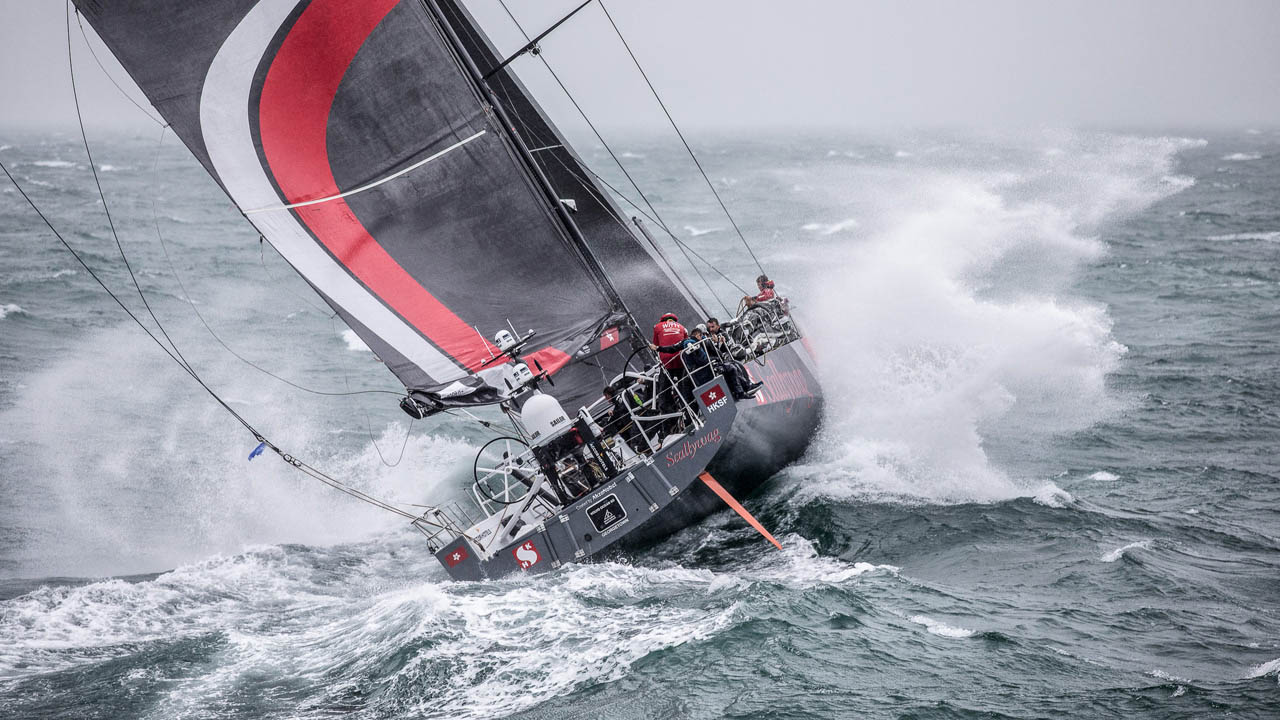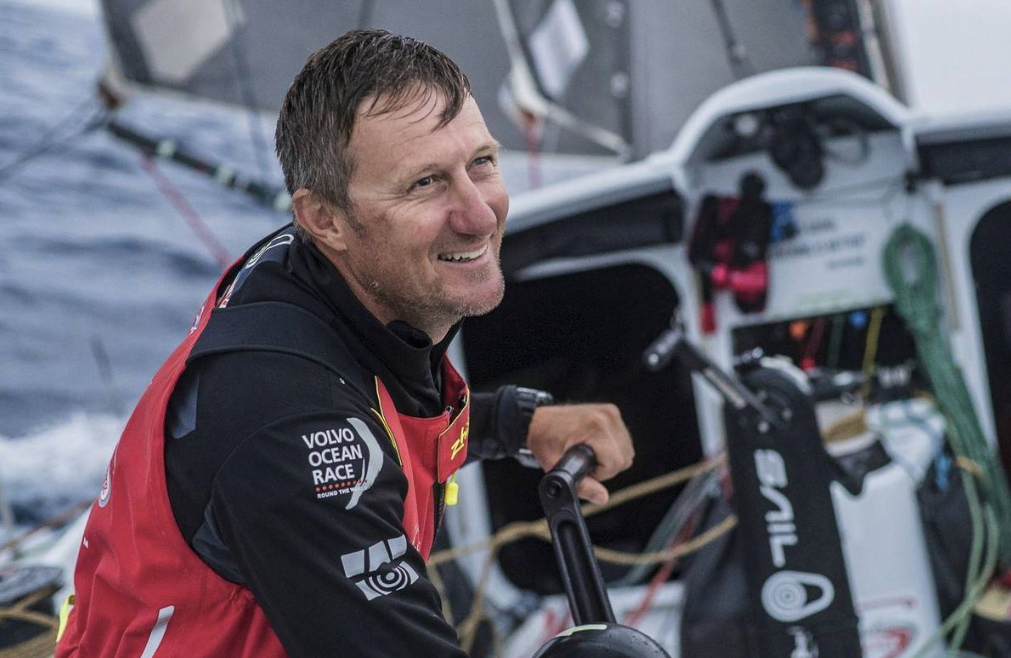A veteran and highly respected sailor, John Fisher, was lost at sea on March 27 during the Volvo Ocean Race’s long, dangerous leg in the Southern Ocean. He was knocked overboard by the mainsheet during an accidental jibe. And, he was not tethered to the boat at the time.
This was the second overboard accident on the same boat, Scallywag, in this event. The other sailor also wasn’t tethered, and was not wearing a life jacket. The conditions were much calmer so they got him back aboard safely in 7 minutes.
Things often happen in twos in both the Volvo and Clipper Races. And, the deaths are starting to pile up.
So, why wasn’t he clipped in? Why couldn’t they rescue him? Why do race organizers send the sailors on a long dangerous leg in the southern Ocean, where one of our own graduates at NY Sailing Center was washed overboard but pulled back by his tether during a Clipper Race? Why do they go?
Well, we know that part. People drawn to participate in such events are always going to go wherever the challenge occurs. The other questions are all worth discussing. And, I’m not seeing or hearing discussions on what I see as the prime issues raised by these accidents.

First: Why are people not ALWAYS wearing PFD’s (life jackets) AND secured to the boat with a tether? First one: duh. Should require no discussion. These boats are going fast, often, if not typically, over 20 knots. They’re sailing in open ocean waters with waves and swells. Even in relatively calm conditions, it takes time to turn around, and at speeds of 15-25 knots (and we’ve seen posts that they go over 30 but I’m not convinced as of yet), the boat gets away from the person in the water quickly. The waters are often cold. People should always have a PFD on.
Second: Why are people not ALWAYS secured to the boat with a tether? It’s a critical last line of defense. John Fisher wasn’t clipped in. He unclipped to go forward to do some task that he or they felt was important enough at the time to go forward for. He might have been about to clip back in to another jackline (security line or webbing that the personal tether attaches to). If that was the case, why aren’t the boats rigged to allow “make before break,” as they say with combined battery switches? Many boats have that when it’s not practical to rig a continuous jackline. Perhaps this boat was and it was user error. Wasn’t there; hasn’t been posted; don’t know.
If Mr. Fisher was tethered in, he probably would have survived. Because he was not, he had little chance of being recovered at all, and even less alive. I’m seeing arguments in different forums where one sailor will criticize decisions on board as well as the entire event as organized and ruled by race management. The flip side sees sailors calling these shameless, bitter, angry rants that show that the first sailor doesn’t know what they’re talking about, and defends the personal liberties and sense of adventure of the people on the water.
And, the person who just died.
But the basics are patently obvious so I won’t further belabor them here. I just wish that the defenders of the race and the participants – and the dead – would get their head out of this perspective and see the bloody obvious, and discuss something they’re not, and should be given their experience with this kind of extreme sailing, to wit…
THIRD: Here’s something that’s less obvious. The gear sometimes fails. That wasn’t the case here. However, in both the Volvo and Clipper races, and in other races and non-race passages, tethering systems have broken and sailors were in the water with the boat sailing away. The faster these boats go, the more shock load is put on the connections when they come taught. At 20-25 knots, I can’t even imagine what the PSI load would be based on the average weight of a sailor plus water resistance with safety and survival equipment. Occasionally, it’s not enough.
I hear and read about different types of connections – which are stronger, which are more practical, how to balance the dual needs (including how to not flay ones knuckles on the gear aboard the boat).
What I’m not hearing about is this: shock absorption. If the tethers were rigged with something elastic to gradually absorb the shock load, the load on the components would be less severe upon ultimate impact. That could only help. Of course, it might make the tether more awkward. I suppose it could, indirectly, lead to a greater risk of fouling onboard and actually causing someone to get twisted, off balance, and go overboard in the first place. I’m not going to pretend I’ve worked this all out.
But, it needs to be done. I propose that either…
- The tech be improved with a method of shock absorption if feasible;
- The boats be mandated to stay below a specified top speed. The faster they’re going, the more risk, as it’s caused by increasing wind (which, in open water, is soon accompanied by larger waves). It’s easy to track; the boats are accurately tracked by satellite at all times.
The Southern Ocean is a brutal area to sail. Perhaps the race should minimize time and distance spent sailing here, or avoid it altogether. That’s been bandied about on various forums. Regardless, the obvious safety measures of always wearing PFD’s and always being clipped in must be mandated (if not already), and observed. And, as people WILL be tossed, knocked, or washed overboard anyway, the equipment must be improved or the boats slowed down. Or, both. We can have high quality racing and have much better safety as well.
But first: people are still not always wearing PFD’s or tethering themselves.
Who wouldn’t agree with the need for starting with that?
Here’s an article on the tragedy that has the most detail we’ve been able to find…
Here’s the Volvo Ocean Race’s photo gallery of John Fisher…
https://www.volvooceanrace.com/en/photo/11417_John-Fisher.html
